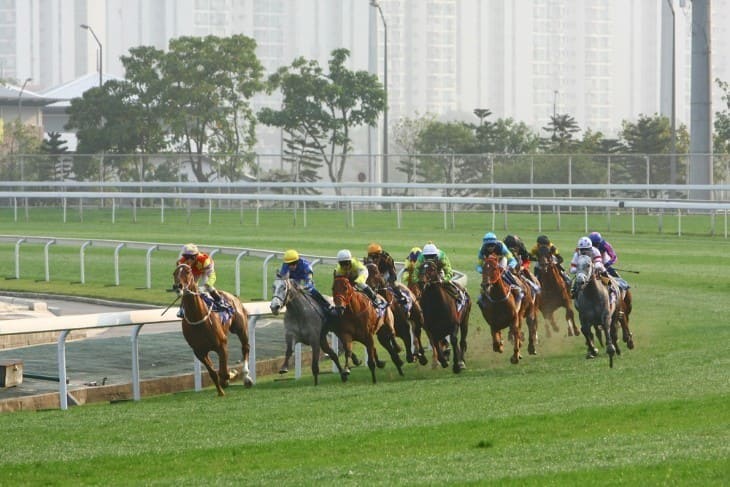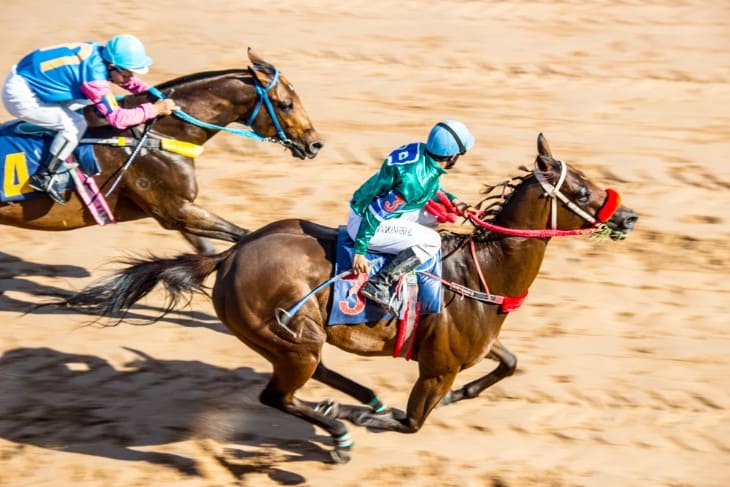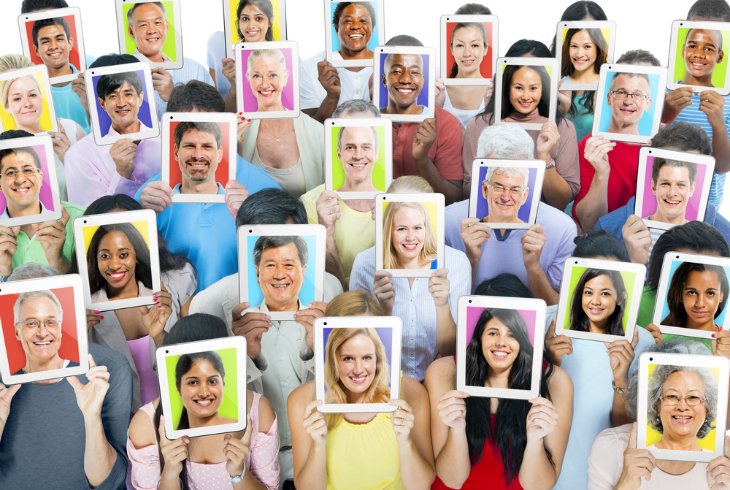- The Historical Tapestry of British Horse Racing
- Pomp and Pageantry: The Role of Horse Racing in British Culture
- A Society of Spectators: The Fans and Followers of British Horse Racing
- Class and Elegance: Dress Codes and Fashion at Racecourses
- Betting and Bookmakers: The Wagering Culture Surrounding Horse Racing
- Jockeys and Trainers: Icons and Personalities in the Racing Community
- Beyond the Track: The Economic Impact of Horse Racing on Local Communities
- Social Gatherings and Hospitality: Entertainment at Race Meetings
- Equine Welfare and Public Perception: Balancing Tradition with Animal Welfare Concerns
- Racing Towards Diversity: Exploring Inclusivity and Representation in British Horse Racing
- Conclusion
Horse racing, deeply woven into the fabric of British culture, stands as a unique spectacle that transcends mere sporting competition. Beyond the thunderous hooves and exhilarating finishes lies a rich tapestry of social intricacies that have shaped the relationship between horse racing and society in the United Kingdom. From its historical roots to its contemporary significance, this article delves into the captivating social dimensions of this beloved sport.
The Historical Tapestry of British Horse Racing
The origins of British horse racing can be traced back to ancient times when noble lords and monarchs would pit their prized steeds against one another in grand contests of speed and endurance. The sport evolved from informal gatherings into structured events, often held on open fields, as a display of prestige and power. As the centuries passed, racing became more organised, culminating in the establishment of the first formal racecourses.
The early race meetings were often exclusive affairs, attended by the upper echelons of society. These events were a breeding ground for camaraderie, alliances, and social interactions among the aristocracy. The betting culture began to take root during this period, with wagers exchanged in a fervent atmosphere of excitement and anticipation. Over time, horse racing became accessible to a wider audience, reflecting the evolving social dynamics of the nation.
[promotion:240]
Pomp and Pageantry: The Role of Horse Racing in British Culture
Stepping into a British racecourse is akin to entering a world of unparalleled elegance and tradition. Horse racing has long held a significant place in British culture, serving as a grand stage for pageantry and spectacle. The iconic Royal Ascot, for instance, encapsulates the epitome of this grandeur, where attendees don their finest attire, complete with elaborate hats and attire befitting the occasion.
The sport's cultural significance extends beyond the racecourse, seeping into literature, art, and even popular music. From Jilly Cooper's novels to George Stubbs' iconic paintings, horse racing has left an indelible mark on the creative landscape of the nation. Racecourses themselves are often architectural marvels, steeped in history and graced with intricate design, providing a unique backdrop for both racing enthusiasts and architectural enthusiasts alike.

A Society of Spectators: The Fans and Followers of British Horse Racing
As the thunderous gallops echo across the racecourse, an electric buzz fills the air. The stands are awash with a sea of faces, each one a unique thread woven into the vibrant fabric of horse racing fandom. From die-hard enthusiasts who can recite pedigrees with precision to casual racegoers seeking a taste of excitement, the spectators encompass a diverse spectrum of individuals.
Friendships are forged amidst the cheers and roars that accompany every race. The camaraderie among fellow spectators, united by a shared passion, creates a sense of belonging that extends beyond the racecourse. Regular attendees form tight-knit communities, bonding over predictions, memories, and the pure thrill of competition. It's not just about the horses; it's about the collective experience and the connections that flourish in this spirited environment.
Beyond the track, social media platforms provide a virtual arena for fans to connect and engage. Online communities discuss tips, strategies, and race analyses, fostering a digital space where the excitement of the races is palpable even when miles away from the course. The emergence of podcasts, blogs, and YouTube channels dedicated to horse racing further amplifies this sense of community, allowing enthusiasts to delve deeper into the intricacies of the sport and share their perspectives.
Class and Elegance: Dress Codes and Fashion at Racecourses
Attending a race meeting in the UK is as much a fashion event as it is a sporting occasion. The racecourse transforms into a runway, where spectators showcase their sartorial prowess with a distinct blend of elegance and creativity. The allure of donning one's finest attire, paired with intricate headpieces and accessories, adds an element of sophistication that elevates the horse racing experience.
Historically, racecourse fashion was dictated by strict dress codes, reflecting the formality of the sport and the society it represented. Dressing up was not merely a choice but an unwritten rule, symbolising respect for the tradition and heritage that horse racing embodies. Over the years, dress codes have evolved, becoming more relaxed to accommodate changing social norms, yet the tradition of dressing to impress remains an integral part of the experience.
Fashion at the races is not limited to the stands; it extends to the hallowed turf itself. Jockeys clad in vibrant silks make a striking visual statement as they guide their mounts towards victory. These silks, bearing unique patterns and colours, often hold historical significance, harking back to the origins of horse racing when knights wore distinctive heraldic colours in battle.
Betting and Bookmakers: The Wagering Culture Surrounding Horse Racing
Amidst the thunderous gallops and the sea of colours, another dimension of horse racing's social fabric comes to the forefront - the art of betting. From seasoned punters who meticulously analyse form to novices trying their luck, betting is an integral part of the horse racing experience in the UK.
Bookmakers, with their chalkboards and quick calculations, are as iconic to the racecourse as the jockeys and the grandstands. The lively atmosphere around the betting ring is a testament to the excitement and anticipation that accompanies each wager. The practice of betting dates back centuries, entwined with the sport's history and evolution. It's not just about winning or losing; it's about the thrill of the gamble, the shared excitement, and the stories that unfold with each race.
The betting culture extends beyond the racecourse, seeping into everyday life. During major racing events, workplaces and social gatherings buzz with discussions about odds, favourites, and potential winners. Betting pools and sweepstakes are organised, adding an extra layer of excitement and camaraderie. In essence, betting on horse racing is not just an activity; it's a cultural phenomenon that binds individuals together and adds an extra layer of suspense to an already exhilarating sport.
Jockeys and Trainers: Icons and Personalities in the Racing Community
Behind the thunderous applause and the clinking of champagne glasses, the heartbeat of British horse racing is sustained by the remarkable individuals who dedicate their lives to the sport. Jockeys, with their lightweight silks and unwavering determination, are the heroes who steer these magnificent creatures to glory. Trainers, on the other hand, are the masterminds behind the scenes, meticulously sculpting champions through dedication, expertise, and an intimate understanding of the equine psyche.
Jockeys, often adored for their courage and skill, have become household names, celebrated for their triumphs and respected for their tenacity in the face of adversity. Their relationships with the horses they ride are profound, built on trust and mutual respect. These riders are more than competitors; they're artists, sculpting performances that leave spectators in awe.
Trainers, working tirelessly in the early hours and late evenings, are the unsung heroes who shape the future of the sport. The bond between trainers and horses is akin to a symphony, each note carefully orchestrated to produce harmonious outcomes on the racetrack. Their expertise extends beyond training regimes; it encompasses nutritional science, veterinary knowledge, and an innate ability to understand and communicate with these magnificent animals.
[promotion:246]
Beyond the Track: The Economic Impact of Horse Racing on Local Communities
Beyond the thrill of the races and the glamour of the racecourse, horse racing in the UK exerts a profound influence on local economies and communities. Race meetings are more than just sporting events; they're a lifeline for many towns and regions, injecting vitality and prosperity into their fabric.
Racecourses act as epicentres of economic activity, attracting visitors from near and far. Hotels and accommodation establishments flourish as racegoers seek a comfortable stay during major events. Local businesses, from restaurants and pubs to souvenir shops, experience a surge in patronage, contributing to the overall economic health of the area. Furthermore, the employment opportunities generated by the racing industry extend to a diverse range of roles, from stable staff and hospitality workers to racecourse management and administrative positions.
The symbiotic relationship between horse racing and local communities extends to charitable endeavours as well. Many race meetings are intertwined with fundraising efforts, supporting a range of causes from medical research to education. The sport's reach extends beyond the racetrack, leaving a positive impact that reverberates through the social and economic landscapes of these communities.
Social Gatherings and Hospitality: Entertainment at Race Meetings
Horse racing is more than just a sport; it's a social affair that transcends generations. Race meetings are grand gatherings that blend the excitement of competition with the conviviality of a festive event. The racecourse transforms into a microcosm of society, where a diverse array of individuals converge to celebrate a shared passion.
Hospitality at race meetings is a fine art, where culinary delights and attentive service combine to create an unforgettable experience. From fine dining in elegant restaurants to the jovial atmosphere of the public enclosures, the options cater to a spectrum of preferences. Picnics on the lawn, champagne toasts in private boxes, and lively conversations in bustling bars – each facet adds to the vibrancy of the occasion.
Race days are not only opportunities to witness thrilling races; they're occasions to celebrate milestones, forge new friendships, and create lasting memories. Families bring generations together, with children witnessing their first race and grandparents reliving cherished moments. It's an environment where stories are shared, laughter resounds, and the sense of camaraderie is palpable.
Equine Welfare and Public Perception: Balancing Tradition with Animal Welfare Concerns
Amidst the glamour and excitement of the racecourse, there lies a critical discourse surrounding equine welfare and the treatment of these magnificent creatures. As societal values evolve, so does the scrutiny placed on the ethical treatment of racehorses, leading to an ongoing dialogue that seeks to strike a delicate balance between tradition and animal welfare concerns.
Racehorses, often revered as athletes in their own right, require meticulous care and attention. Trainers, veterinarians, and regulatory bodies work tirelessly to ensure the health and well-being of these equine athletes. However, as public awareness of animal rights and welfare grows, questions arise about the use of whip, track surfaces, and the overall impact of the sport on horse longevity.
The racing industry has taken significant strides to address these concerns. Investments in veterinary research, improvements in training methods, and advancements in track surfaces are all indicative of a collective commitment to enhancing equine welfare. Furthermore, the spotlight on these issues has led to heightened transparency, as industry stakeholders engage with the public and address concerns head-on.
Racing Towards Diversity: Exploring Inclusivity and Representation in British Horse Racing
As the sun sets on the rolling green hills of the racecourse, the world of horse racing undergoes a transformation that mirrors the evolving tapestry of British society. Efforts towards inclusivity and representation have become central to the sport's narrative, as stakeholders work collaboratively to ensure that horse racing reflects the diversity that characterises the nation.
The jockeys, often the human face of the sport, are at the forefront of this transformation. Over the years, a new generation of riders from various backgrounds has emerged, challenging stereotypes and breaking down barriers. This inclusivity is not merely symbolic; it extends to tangible initiatives that support aspiring jockeys from diverse communities, offering opportunities that were previously elusive.
Representation in horse racing extends beyond the saddle, encompassing roles in administration, management, and ownership. The industry's commitment to fostering diversity is indicative of a broader societal shift, recognising that a more inclusive and representative sport enriches the experience for participants and spectators alike.

Conclusion
As we conclude this exploration of the social aspects of horse racing in the UK, we're reminded of the intricate threads that compose the vibrant tapestry of this beloved sport. From its historical roots to its modern manifestations, from the cheers of the spectators to the thunderous gallops of the horses, horse racing is not just a sport; it's a living, breathing embodiment of British culture, entwined with the social dynamics that shape our society.
[promotion:23]





